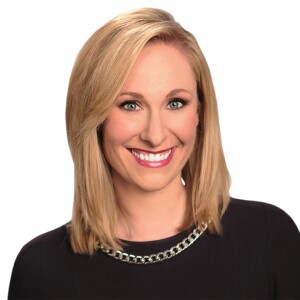(WSYM) — Due to the rising costs of prescription medication, families are being forced to choose between paying their bills or purchasing medicine they need.
Fifteen years ago, 6 percent of overall health care expense was spent on prescription drugs. Today it’s at over 22 percent.
In the midst of the pandemic, the AARP says big drug companies raised prices on hundreds of medications, including those commonly used in intensive care units and drugs being used to treat COVID-19.
At a congressional hearing in the fall, cancer patient Ramae Hamrin testified.
"In order to keep taking this drug, I have to deplete my life savings cash out my 401k and sell my house," Hamrin said.
She pays $15,000 a year out of pocket.
Even patients without a rare disease face similar dilemmas. Lori and Tammy both chip in to buy their mother's $400 insulin pens.
"She can't go off insulin ever she would die," they said, adding that her insurance covers nothing.
But they can’t afford to fill her Exelon patch prescription, which also costs hundreds.
"It also helps slow down the memory loss due to the dementia," they said.
These are the difficult decisions millions of Americans are forced to make more and more.
According to the Peterson-KFF Health System Tracker, brand-name drugs have increased by over 60 percent since 2014. Prices on more than 800 drugs were raised in the midst of the pandemic.
Dominick Pallone, executive director at Michigan Association of Health Plans, said their membership provides health insurance for 3 million Michiganders.
"We even see generic drugs that no longer have patent protection that often go up rather than down, insulin is a great example," Pallone said.
Why are drugs so expensive? It depends on who you ask.
"When you buy medication at a retail pharmacy, there is a mark up sometimes 20 percent, sometimes 50 percent, sometimes 200 percent," said Dr. Paul Thomas at Plum Health Direct Primary Care.
“It’s not just the pharmacy, it’s not just the insurance. There’s the pharmacy benefits managers,” says Amy Thompson, PharmD, BCACP, professor at the University of Michigan.
Pallone said pharmacy benefit managers are licensed and regulated to negotiate volume discounts on drug purchases. That while they do get paid, they aren't the reason for high drug costs.
"It all starts with the manufacturer who sets what is known as the list price for each drug," said Pallone.
How are those list prices set?
"There’s lack of transparency so it’s not very clear who’s really profiting the most and where those funds are flowing," said Amy Thompson, Associate Chair, Department of Clinical Pharmacy at University of Michigan College of Pharmacy.
Tens of billions are spent every year on marketing.
"The US and Australia are the only countries that allow for direct to consumer advertising," said Thompson.
Pharmaceutical CEOs told a congressional oversight committee that research and development is a big factor.
But a confidential internal document from Teva Pharmaceutical Industries revealed another reason: their costs are “influenced heavily by U.S. being allowed to hike prices.”
The United States lets pharmaceutical companies set their own prices, whereas Canada and many other countries have strict pricing regulations.
"If a new medication is developed and it's not shown to be more effective than other medications that are similar to it, they say you can’t have a price higher than what’s already available," said Thompson.
Humira for example prescribed to treat rheumatoid arthritis is priced 96% higher in United States than in the United Kingdom, according to data from the International Federation of Health Plans.
And just across the border in Canada …
"It’s quite clear that insulin prices are much more affordable in Canada, a number of reasons behind that," said Pallone.
Remember sisters Lori and Tammy buying insulin pens for their mother?
"We got ten pens for the price of one pen from Canada, it’s ridiculous," they said.
Tammy's son is autistic; his medications aren't all available in Canada.
"He’s on 4 different medications, I use GoodRx just to get the cost down ... because one pill is $400," said Tammy.
In the coming weeks, we will explore the pros and cons of discount programs and crossing the border, plus show you how to get drugs at wholesale prices, and dive into why a package of bills aimed at lowering costs could actually do the opposite.
If you're in need of help affording cancer treatment drugs, click here for resources.
Click here to learn more about a local direct primary care clinic which has a membership-based structure and sells prescription drugs at wholesale cost to its members.



